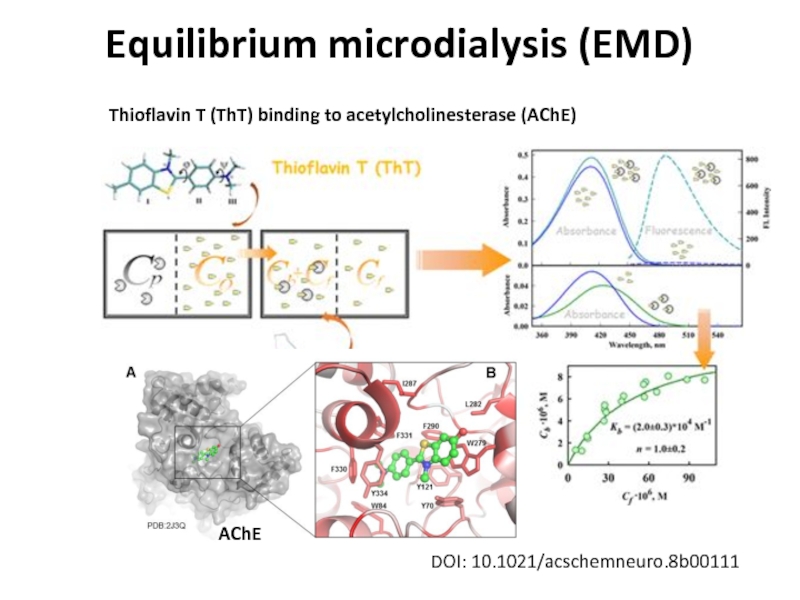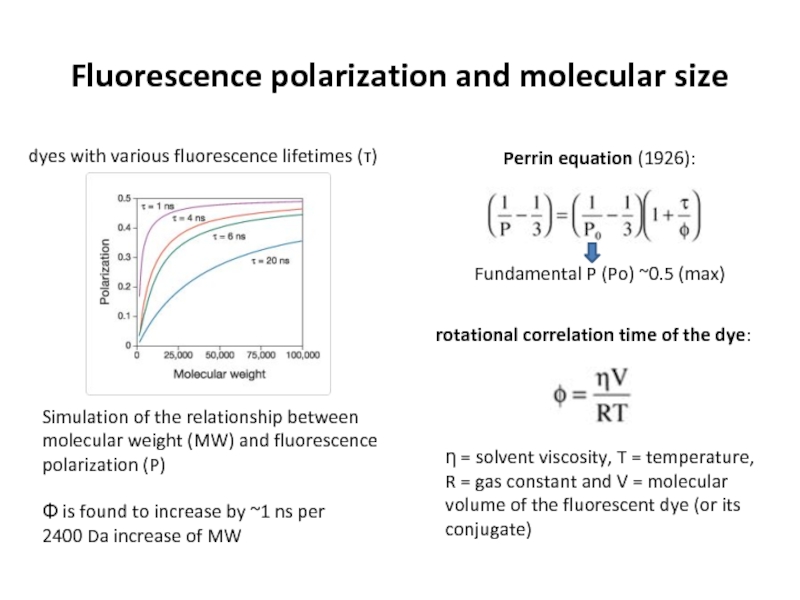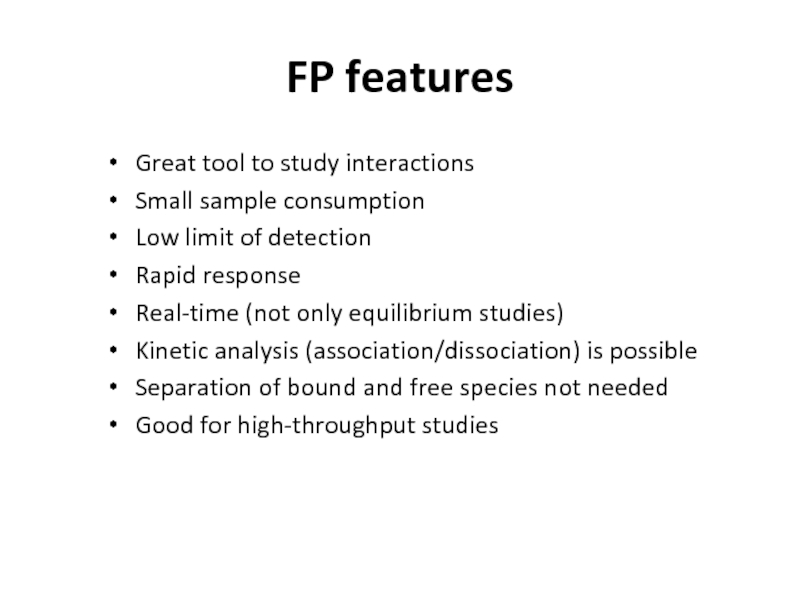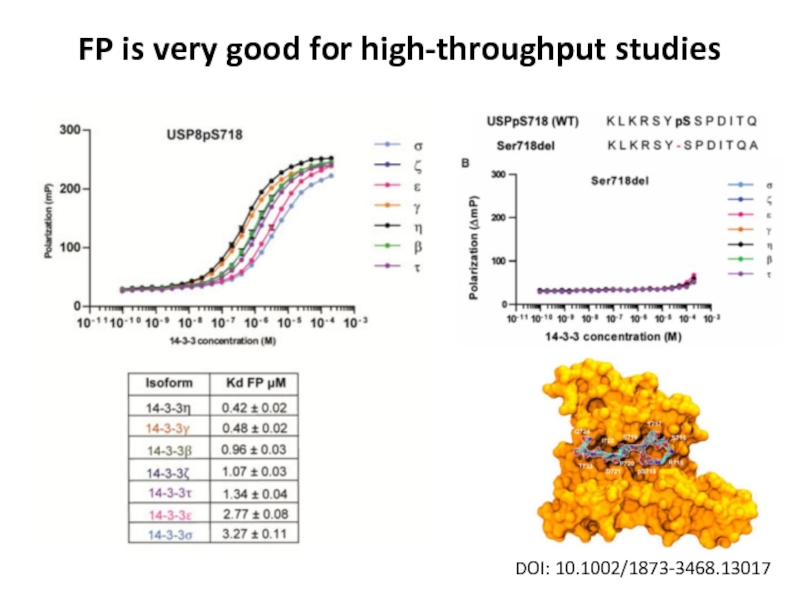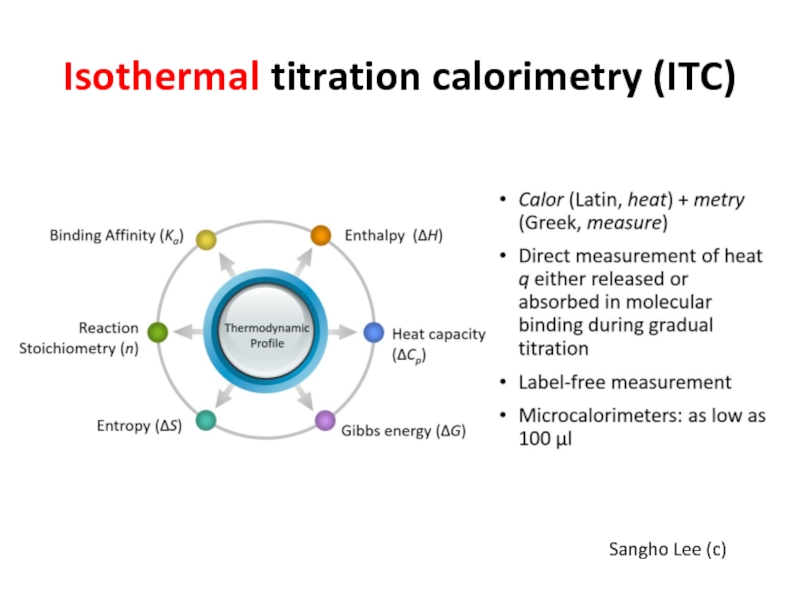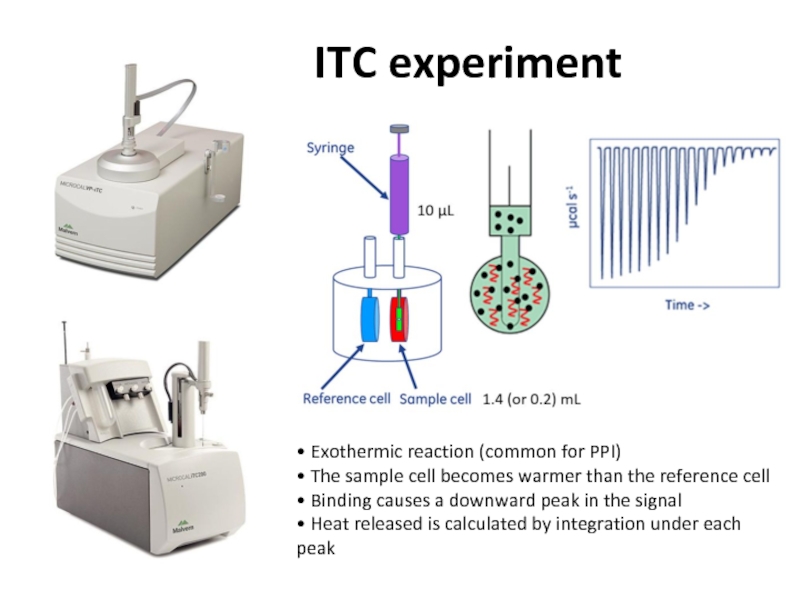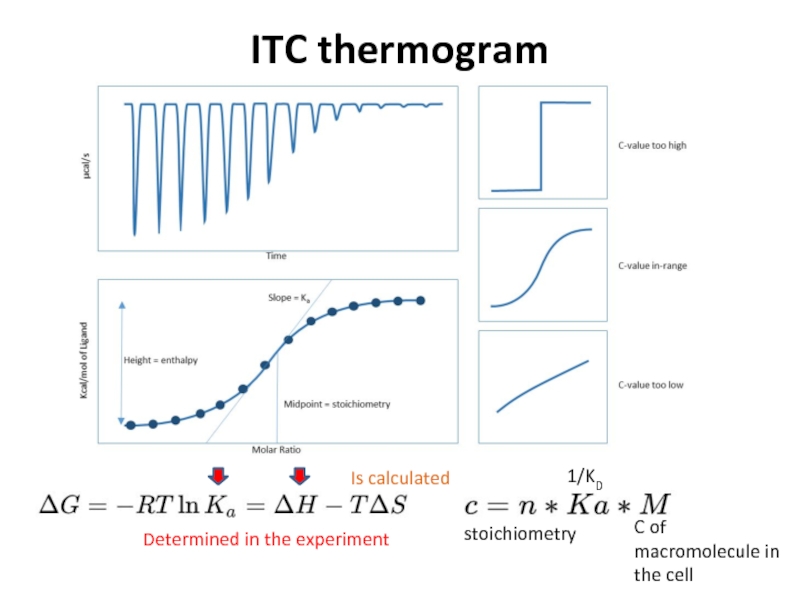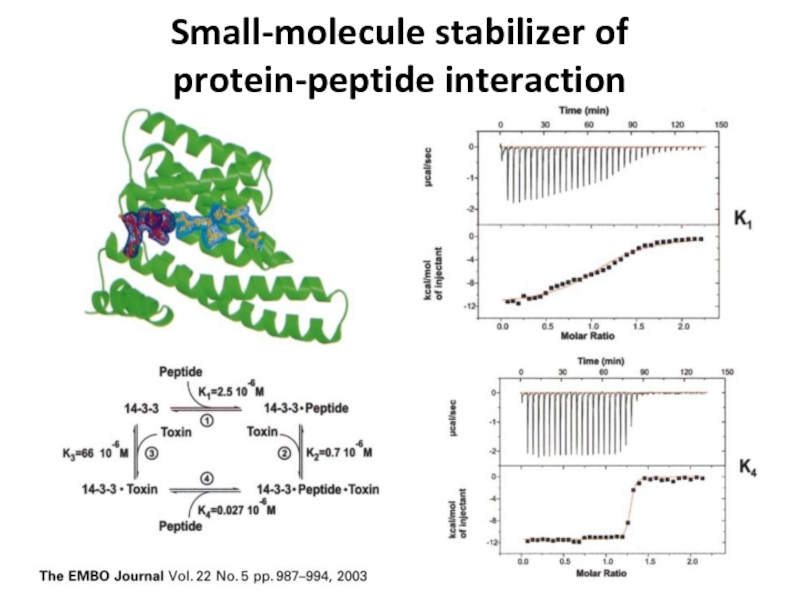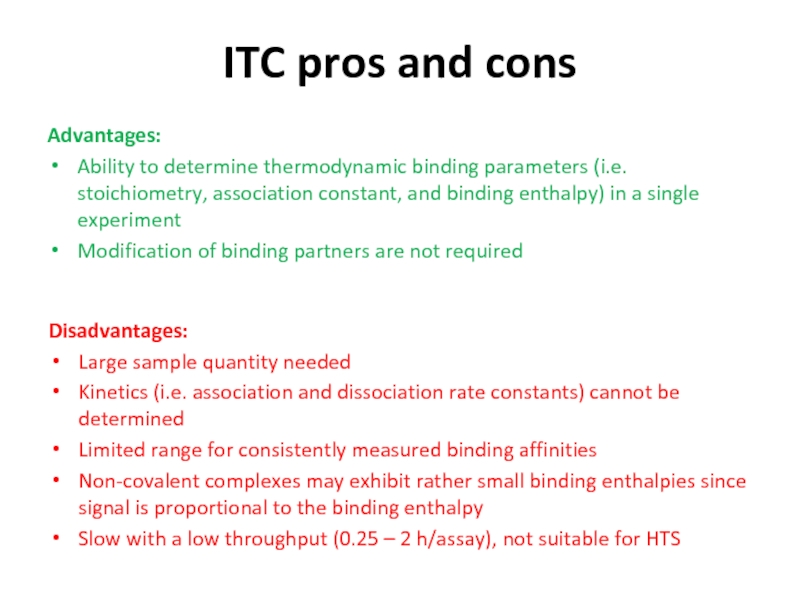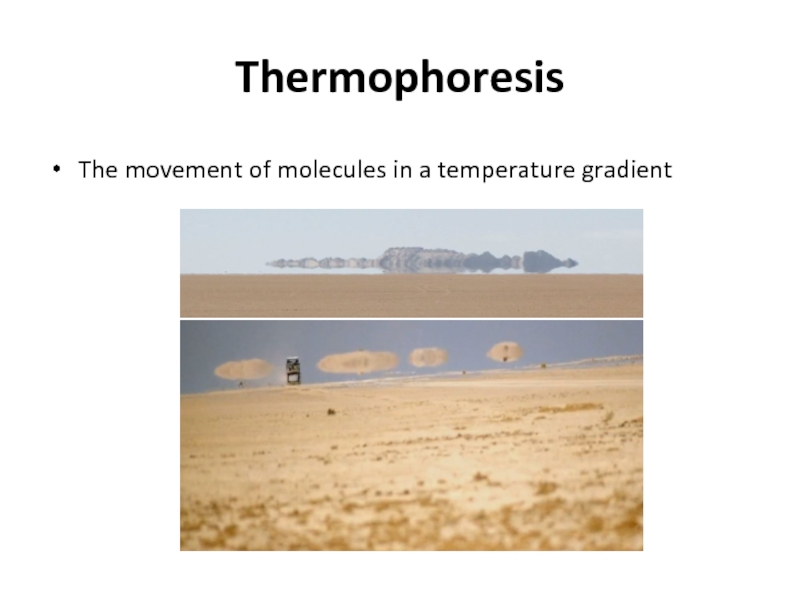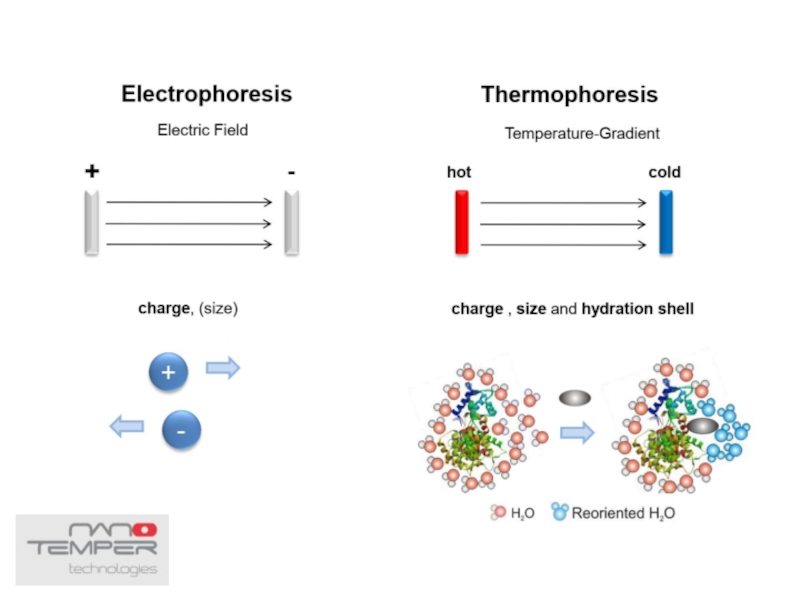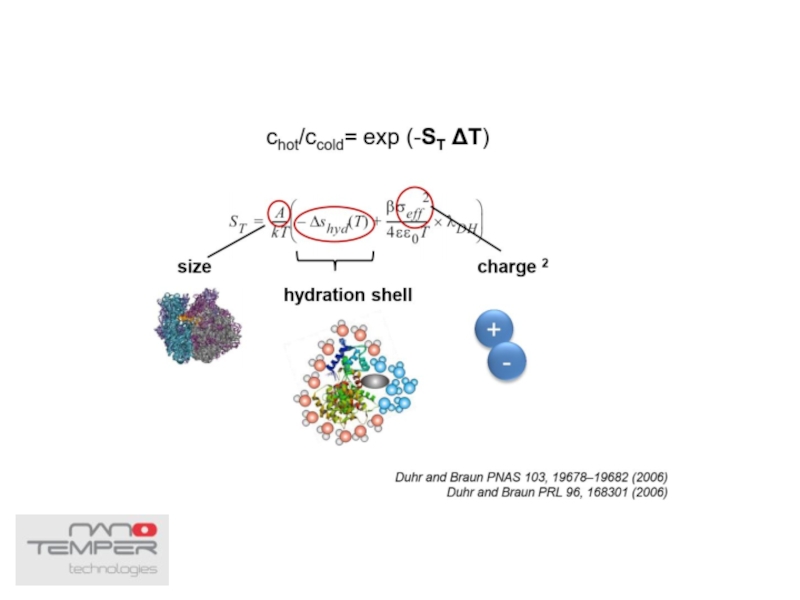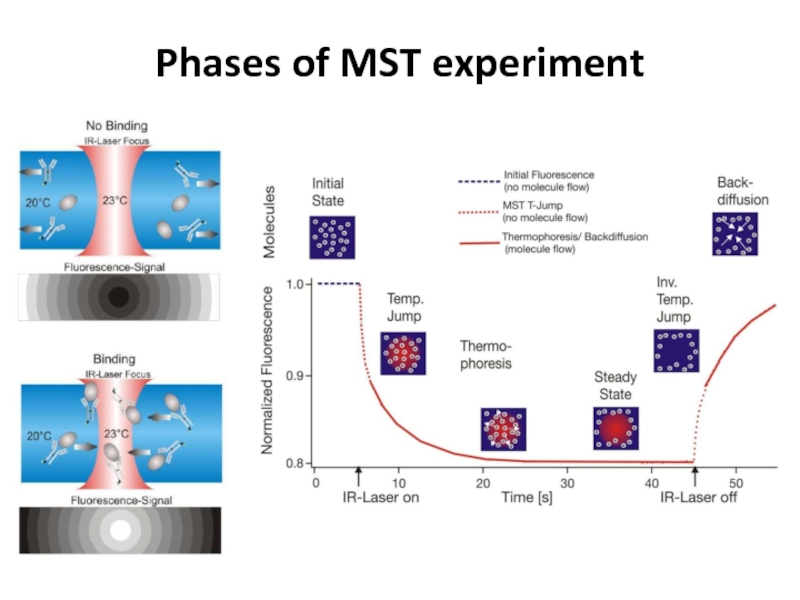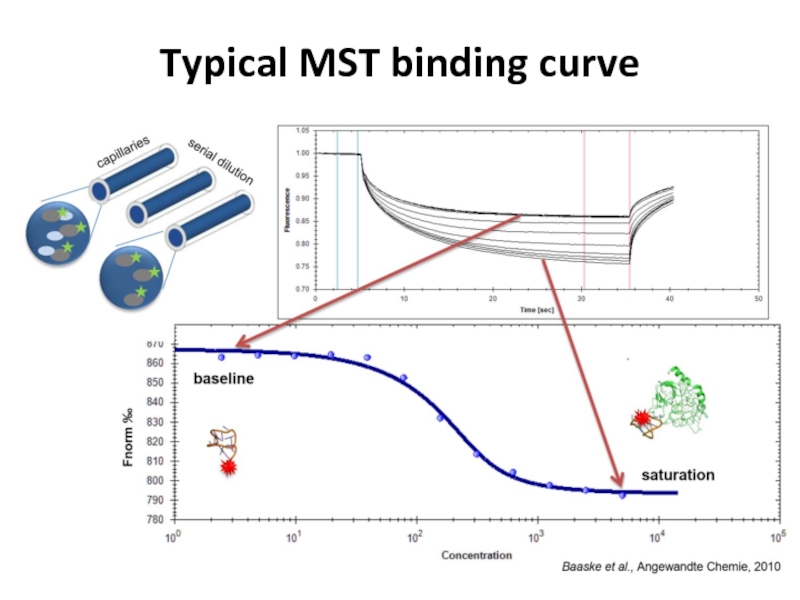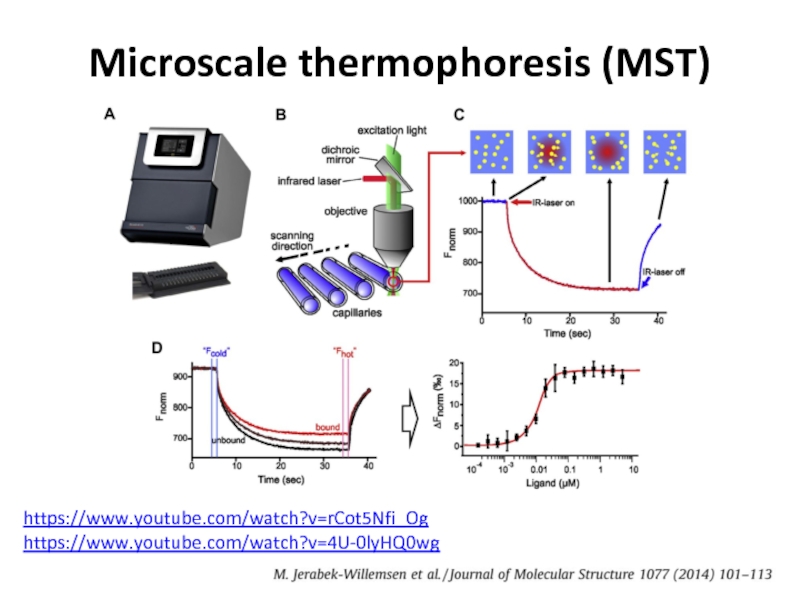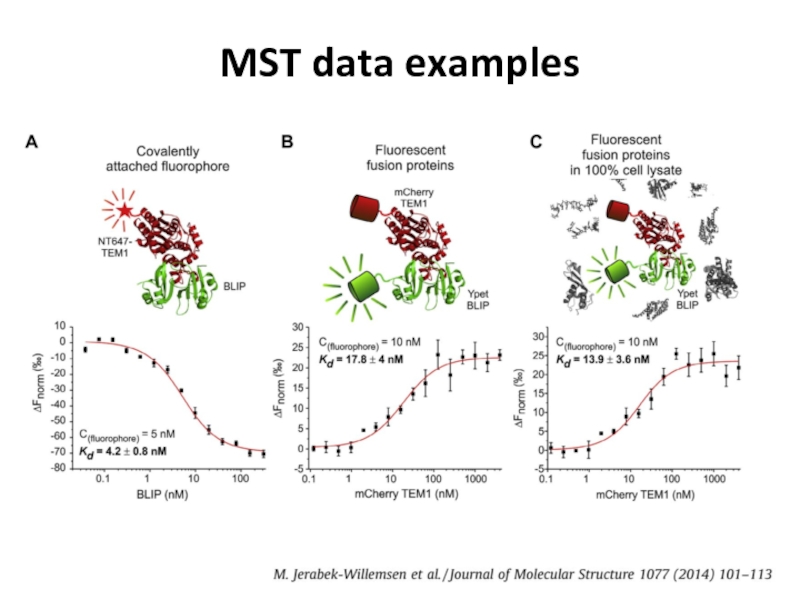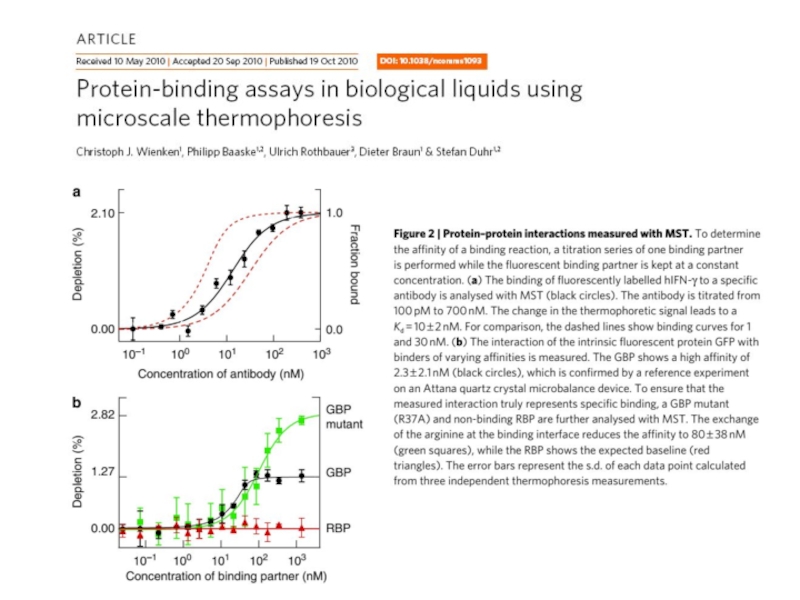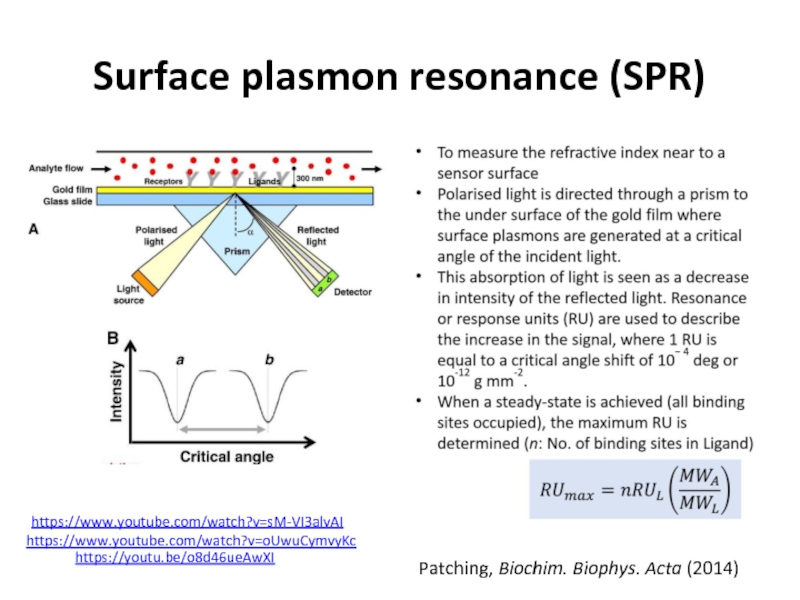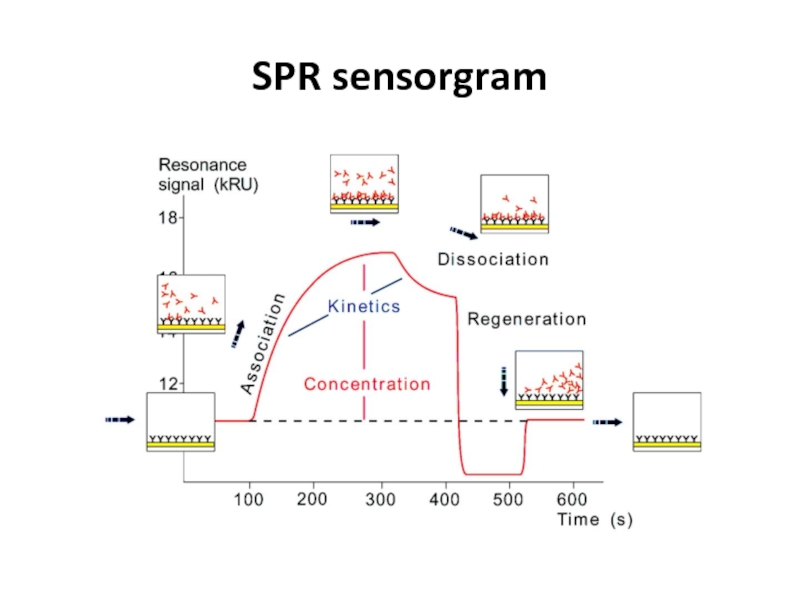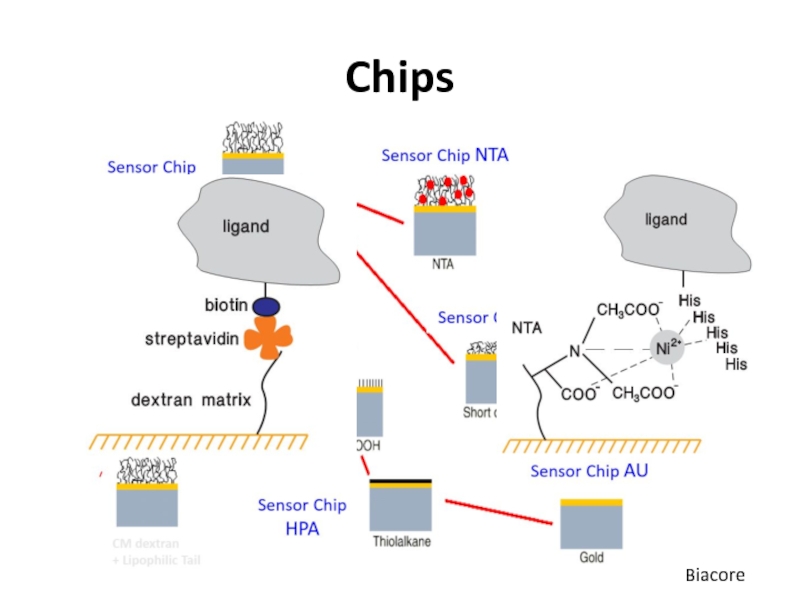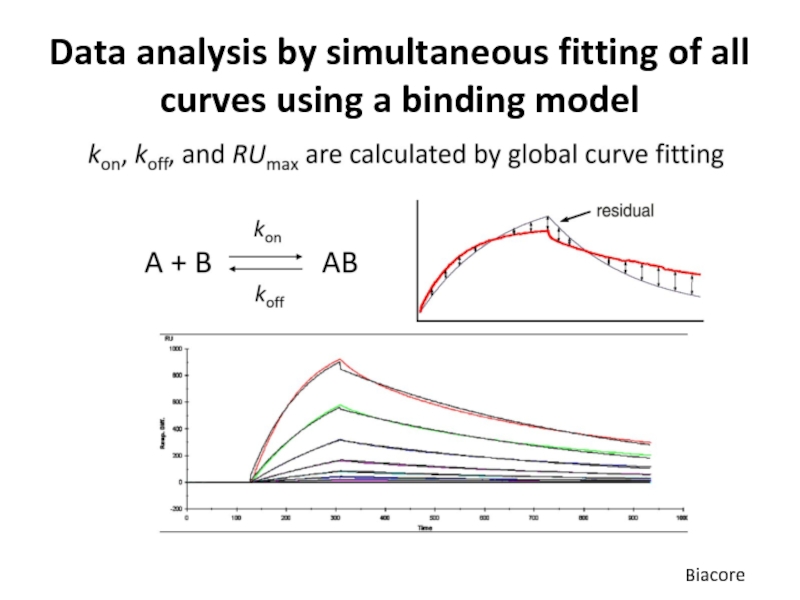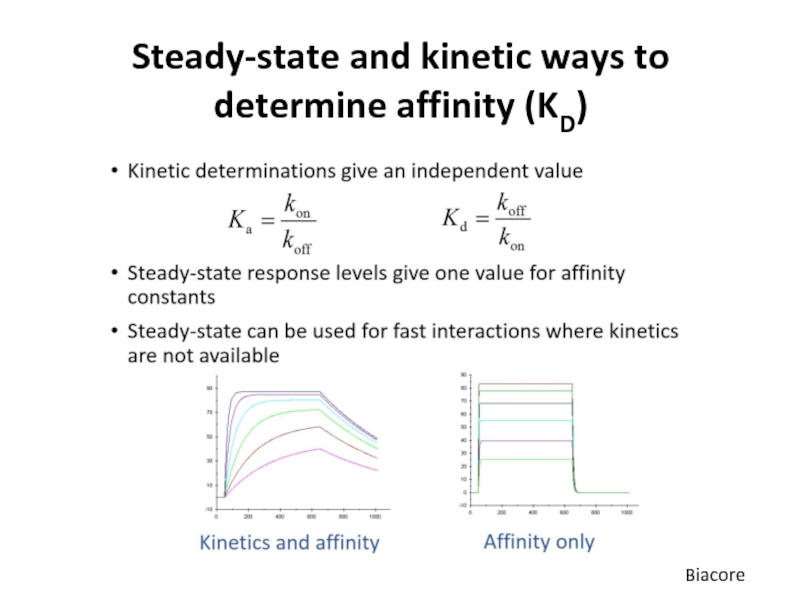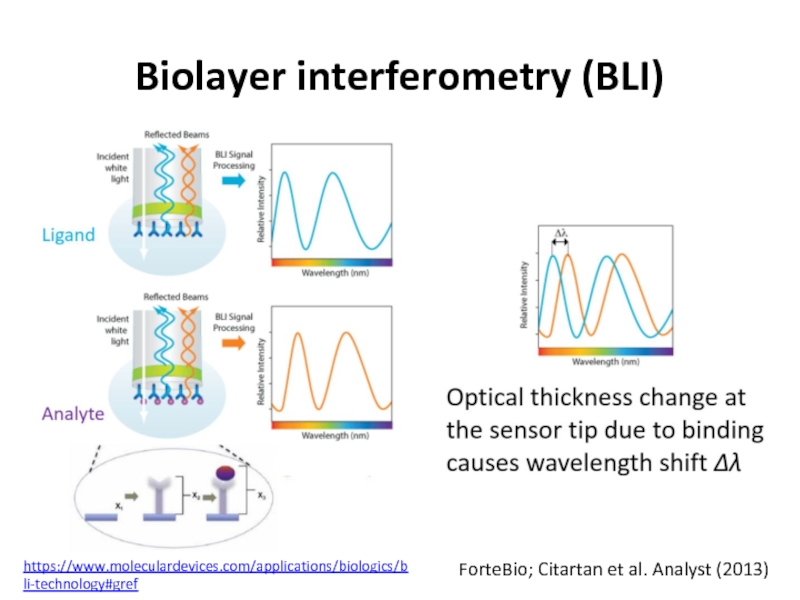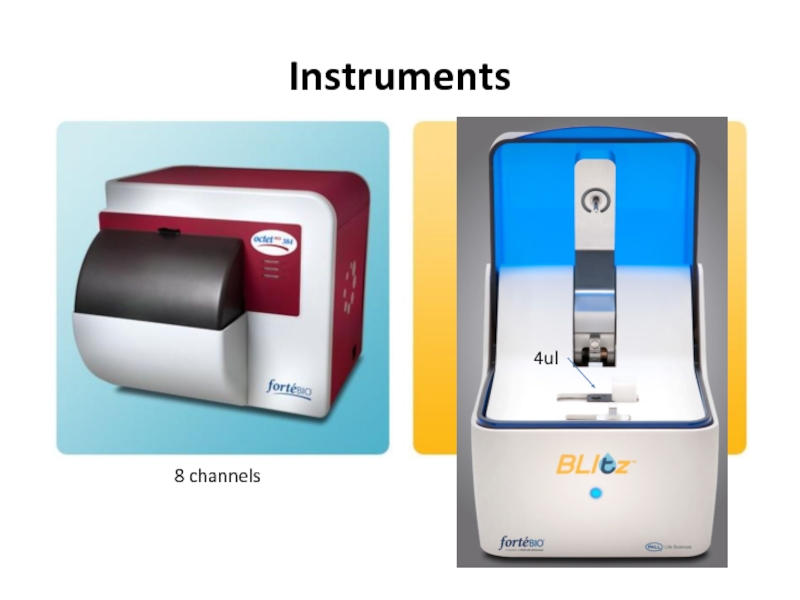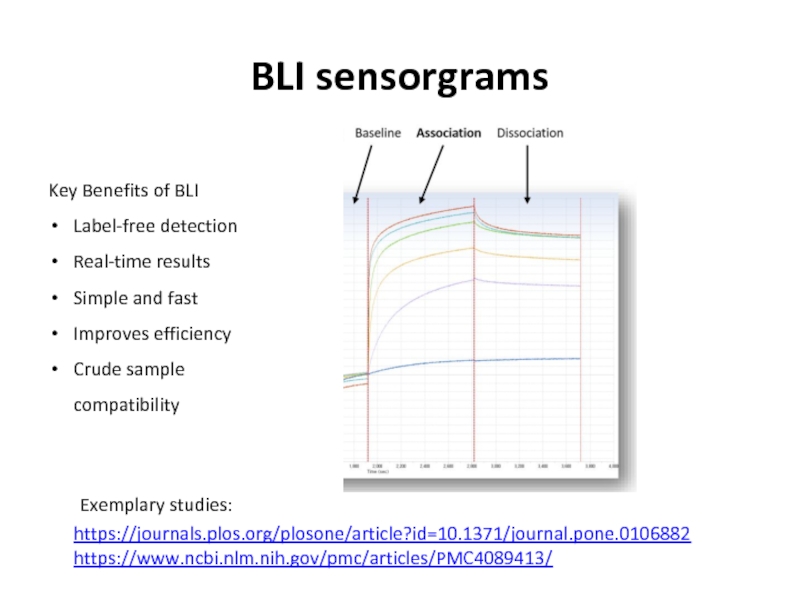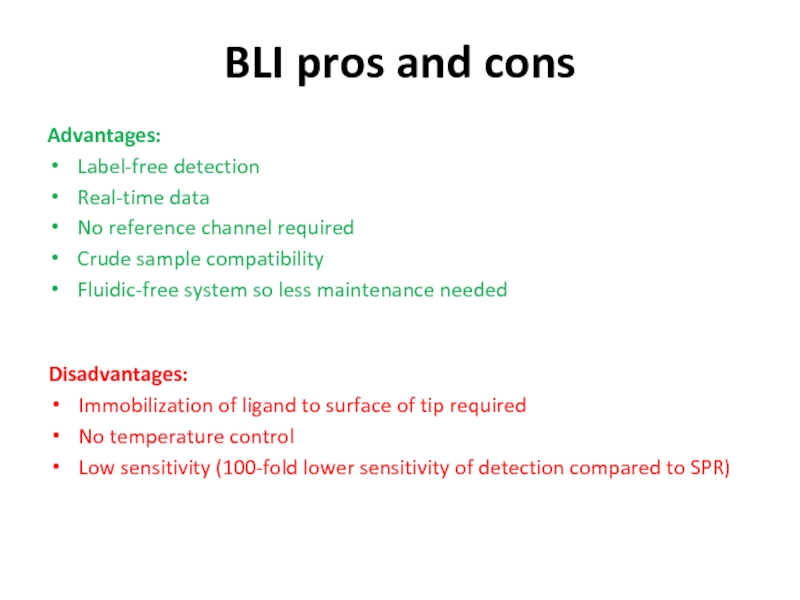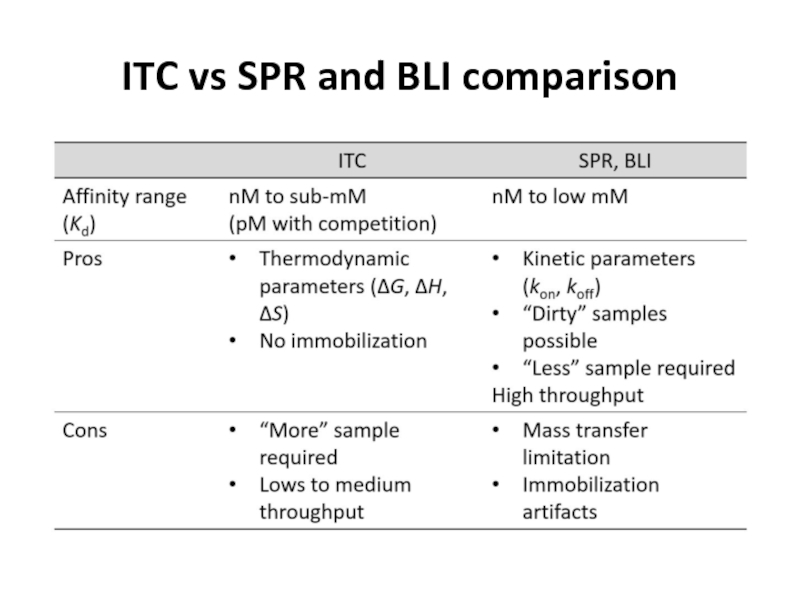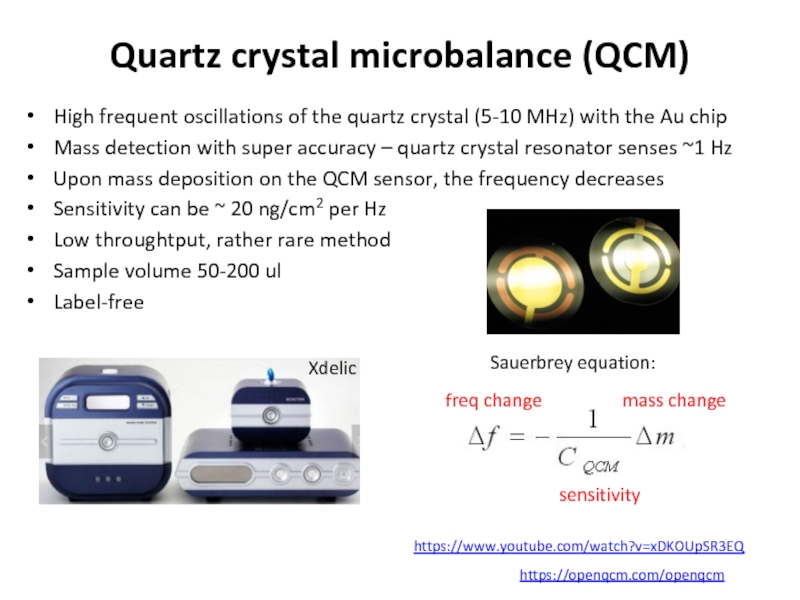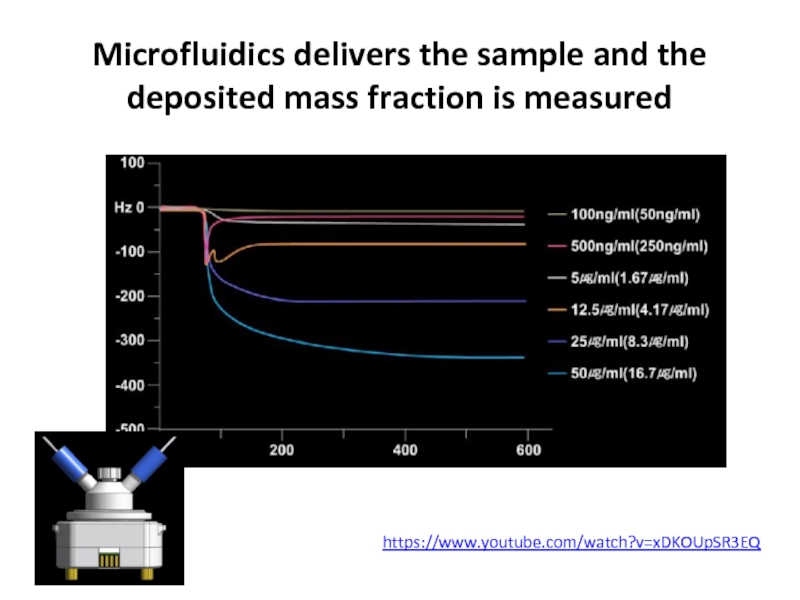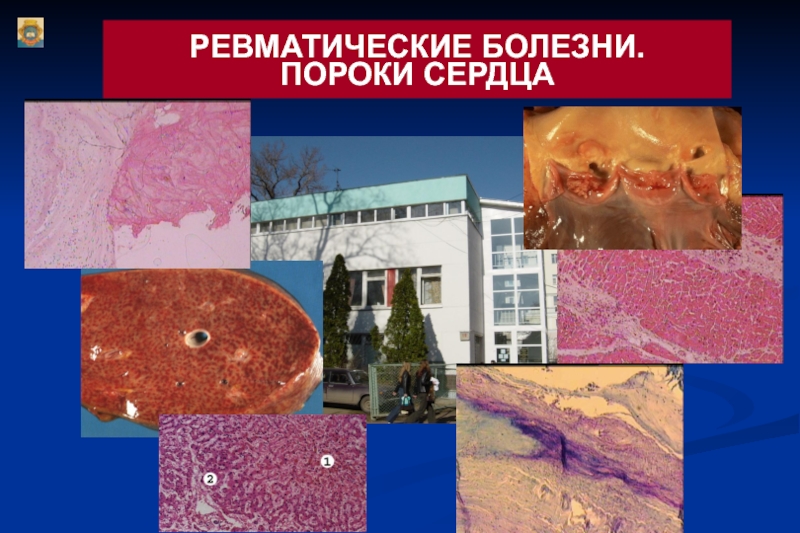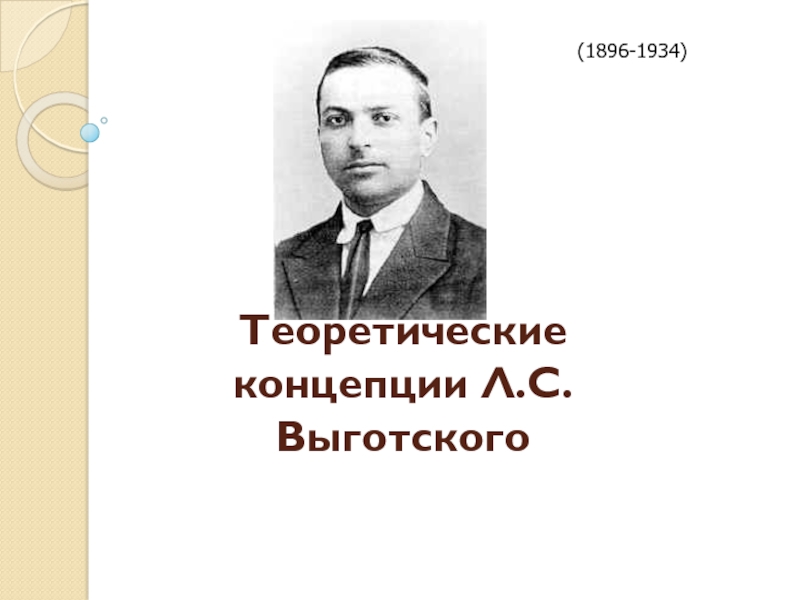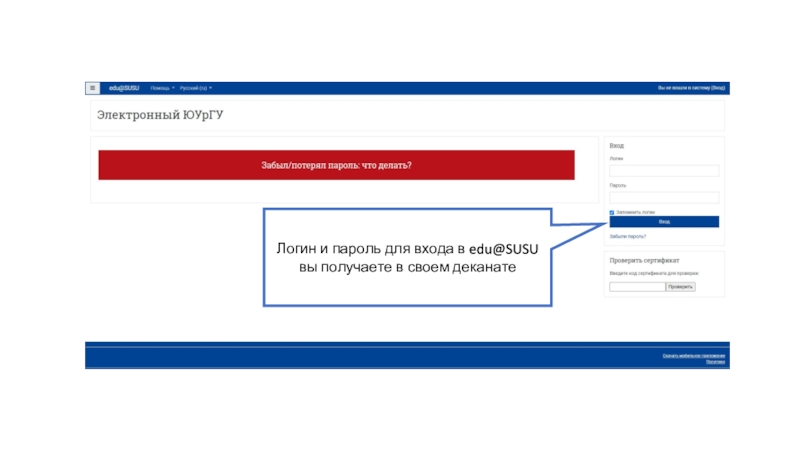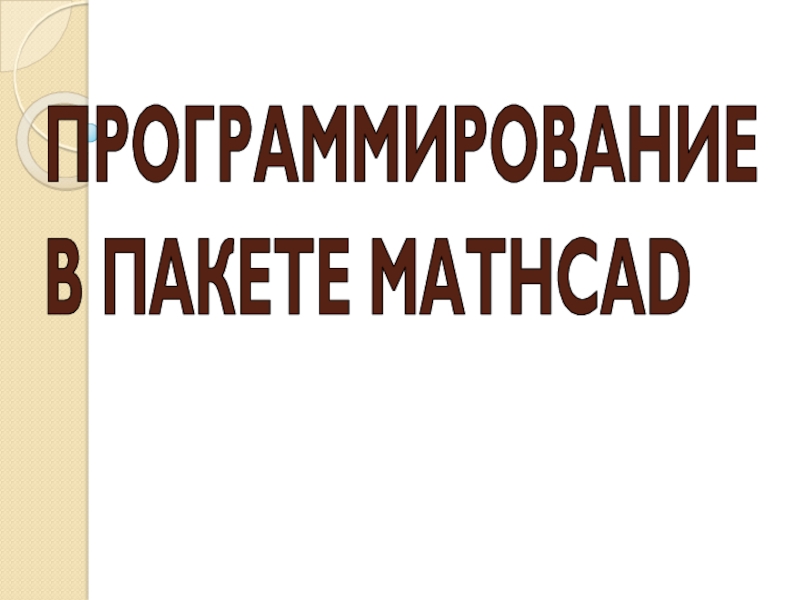Разделы презентаций
- Разное
- Английский язык
- Астрономия
- Алгебра
- Биология
- География
- Геометрия
- Детские презентации
- Информатика
- История
- Литература
- Математика
- Медицина
- Менеджмент
- Музыка
- МХК
- Немецкий язык
- ОБЖ
- Обществознание
- Окружающий мир
- Педагогика
- Русский язык
- Технология
- Физика
- Философия
- Химия
- Шаблоны, картинки для презентаций
- Экология
- Экономика
- Юриспруденция
Лекция 6 Методы исследования взаимодействий с участием белков (Co-IP,
Содержание
- 1. Лекция 6 Методы исследования взаимодействий с участием белков (Co-IP,
- 2. Protein-protein interactions (PPIs)>80% of proteins function via
- 3. Interactions of proteins control the life of the cell
- 4. Interactions of proteins control the life of
- 5. Types of PPIs
- 6. Types of PPIsHomologous interactions: • The same
- 7. Слайд 7
- 8. Types of PPIsQualitative methods: • Co-immunoprecipitation (Co-IP)•
- 9. Detecting PPI: co-immunoprecipitation (Co-IP)
- 10. Reciprocal Co-IP in investigation of 14-3-3 interacting
- 11. Tandem affinity purification (TAP)
- 12. M + L MLM
- 13. Simple binding A+B ↔ AB quadratic equationhttps://www.symbolab.com/solver/equation-calculator/%5Cleft(100-x%5Cright)%5Ccdot%5Cleft(10-x%5Cright)-15%5Ccdot%20x%3D0
- 14. Simple binding A+B ↔ AB quadratic equationhttps://www.symbolab.com/solver/equation-calculator/%5Cleft(100-x%5Cright)%5Ccdot%5Cleft(10-x%5Cright)-15%5Ccdot%20x%3D0
- 15. Dimerization processM + M M2 or DKd
- 16. For a reversible process, one can assess
- 17. For a reversible process, one can assess
- 18. ΔGo = R T ln KD@ 20 °C
- 19. At equilibrium, both forward and reverse reaction
- 20. Thermodynamics of interactionGibbs free energy EnthalpyEntropyR T ln KD =
- 21. Binding affinity rangehttp://www.bindingdb.org/bind/index.jsp 1,772,210 binding data :http://www.pdbbind-cn.org
- 22. Methods to study PPI (and other
- 23. Equilibrium microdialysis (EMD)Two chambers of equal volume
- 24. Equilibrium microdialysis (EMD)L total isknownL free is measured-> L bound is calculatedM total isknown
- 25. Equilibrium microdialysis (EMD)KD = [M] * [L][ML]M
- 26. Equilibrium microdialysis (EMD)DOI: 10.1021/acschemneuro.8b00111 Thioflavin T (ThT) binding to acetylcholinesterase (AChE)AChE
- 27. Fluorescence polarization (FP)The degree of polarization is
- 28. Fluorescence polarization (P) or anisotropy (r):no nominal
- 29. Fluorescence polarization and molecular sizeη = solvent
- 30. FP featuresGreat tool to study interactionsSmall sample
- 31. FP is very good for high-throughput studiesDOI: 10.1002/1873-3468.13017
- 32. Isothermal titration calorimetry (ITC)Sangho Lee (c)https://www.youtube.com/watch?v=o_IpWcWKNXI
- 33. Isothermal titration calorimetry (ITC)Sangho Lee (c)
- 34. ITC experiment• Exothermic reaction (common for PPI)•
- 35. ITC thermogramstoichiometry1/KDC of macromolecule in the cellDetermined in the experimentIs calculated
- 36. Small-molecule stabilizer of protein-peptide interaction
- 37. ITC pros and consAdvantages:Ability to determine thermodynamic
- 38. Thermophoresis The movement of molecules in a temperature gradient
- 39. Слайд 39
- 40. Слайд 40
- 41. Phases of MST experiment
- 42. Typical MST binding curve
- 43. Microscale thermophoresis (MST)https://www.youtube.com/watch?v=4U-0lyHQ0wg https://www.youtube.com/watch?v=rCot5Nfi_Og
- 44. MST data examples
- 45. Слайд 45
- 46. MST pros and consAdvantages:Small sample sizeImmobilization freeMinimal
- 47. Surface plasmon resonance (SPR)
- 48. Reflection and refraction at different angles
- 49. Surface plasmon resonance (SPR)Patching, Biochim. Biophys. Acta (2014) https://youtu.be/o8d46ueAwXIhttps://www.youtube.com/watch?v=oUwuCymvyKc https://www.youtube.com/watch?v=sM-VI3alvAI
- 50. SPR sensorgram
- 51. ChipsBiacore
- 52. Why is kinetic analysis important?
- 53. Practical considerationsUse several concentrations (ideally, 10 times
- 54. Data analysis by simultaneous fitting of all curves using a binding modelBiacore
- 55. Steady-state and kinetic ways to determine affinity (KD)Biacore
- 56. Steady-state and kinetic ways to determine affinity (KD)Biacore
- 57. SPR pros and consAdvantages:Label-free detectionReal-time data (i.e.
- 58. Biolayer interferometry (BLI)ForteBio; Citartan et al. Analyst (2013)https://www.moleculardevices.com/applications/biologics/bli-technology#gref
- 59. Instruments8 channels1 channel
- 60. Instruments8 channels1 channel
- 61. BLI sensorgramsKey Benefits of BLILabel-free detectionReal-time resultsSimple and fastImproves efficiencyCrude sample compatibilityhttps://journals.plos.org/plosone/article?id=10.1371/journal.pone.0106882https://www.ncbi.nlm.nih.gov/pmc/articles/PMC4089413/ Exemplary studies:
- 62. BLI pros and consAdvantages:Label-free detectionReal-time dataNo reference
- 63. ITC vs SPR and BLI comparison
- 64. Quartz crystal microbalance (QCM)High frequent oscillations of
- 65. Microfluidics delivers the sample and the deposited mass fraction is measured https://www.youtube.com/watch?v=xDKOUpSR3EQ
- 66. Overview of the courseProteins: size and hydrodynamic
- 67. Скачать презентанцию
Слайды и текст этой презентации
Слайд 1Лекция 6 Методы исследования взаимодействий с участием белков (Co-IP, equilibrium microdialysis,
ITC, MST, SPR, BLI, QСM). Примеры.
Слайд 2Protein-protein interactions (PPIs)
>80% of proteins function via interaction with other
proteins (PMID: 17640003)
For each protein ~10 protein partners (interactome)
Human “interactome” -
300–650 000 PPIs (PMID: 28968506)Mechanisms are in the core of the vital processes
Data are deposited and systematized in databases – MINT, iHOP, InAct
Слайд 4Interactions of proteins control the life of the cell
… cell
biochemistry would appear to be largely run by a set
of protein complexes, rather than proteins that act individually and exist in isolated species.Cell 1992, Bruce Alberts & Miake-Lye
Слайд 6Types of PPIs
Homologous interactions:
• The same proteins
• Oligomers
• Coiled-coil
• Amyloids
Heterologous
interactions: • Different proteins • Enzyme – inhibitors • Antibody – antigen • Protein
complexesСлайд 8Types of PPIs
Qualitative methods:
• Co-immunoprecipitation (Co-IP)
• Pull-down
Quantitative methods:
• Isothermal titration
calorimetry (ITC) • Surface plasmon resonanse (SPR) • Quartz microbalance (QMB) • Fluorescence
polarization (FP)• others
https://link.springer.com/book/10.1007%2F978-1-4939-2425-7
Слайд 10Reciprocal Co-IP in investigation of 14-3-3 interacting proteins
Direct
Immunoprecipitation of 14-3-3
and detection of bound partner proteins
Reverse
Immunoprecipitation of partner proteins
and detection of 14-3-3Ge et al, J.Proteom.Res., 2010: 5848-5858
Слайд 12M + L ML
M is free macromolecule
L
is free ligand
ML is complex
Lo >>
Mo, Lo=Lfree or you can measure LfreeCase 1 (specific)
Case 2 (general)
https://employees.csbsju.edu/hjakubowski/classes/ch331/bind/olbindderveq.html
Lo >> Mo, you can’t measure Lfree
ML =
Mo * Lfree
KD + Lfree
hyperbola
parabola
KD =
(Mo – ML) * (Lo – ML)
ML
Слайд 13Simple binding A+B ↔ AB
quadratic equation
https://www.symbolab.com/solver/equation-calculator/%5Cleft(100-x%5Cright)%5Ccdot%5Cleft(10-x%5Cright)-15%5Ccdot%20x%3D0
Online quadratic equation solver:
(just put your numbers for Ao, Bo, KD and choose
the right root)Слайд 14Simple binding A+B ↔ AB
quadratic equation
https://www.symbolab.com/solver/equation-calculator/%5Cleft(100-x%5Cright)%5Ccdot%5Cleft(10-x%5Cright)-15%5Ccdot%20x%3D0
Online quadratic equation solver:
(just put your numbers for Ao, Bo, KD and choose
the right root)Root 1
Root 2
Слайд 15Dimerization process
M + M M2 or D
Kd = [M][M]/[D]
= [M]2/[D]
[Mo] = [M] + 2[D]
[M] = [Mo] -2[D]
Kd =
(Mo-2D)(Mo-2D)/D4D2 - (4Mo+Kd)D + (Mo)2 = 0
Y = 2[D]/[Mo]
Lo >> Mo => quadratic equation
Слайд 16For a reversible process, one can assess thermodynamics of binding
Kd
= 1/Keq
ΔGo = - R T ln Keq = R
T ln Kd25 µM
= 25*10-6 M
ΔGo = R*T * (-10.6) =
@ 20 °C
2 cal/mol*K
– 6.2 kcal/mol
Слайд 17For a reversible process, one can assess thermodynamics of binding
Kd
= 1/Keq
ΔGo = - R T ln Keq = R
T ln Kd25 nM
= 25*10-9 M
ΔGo = R*T * (-17.5) =
@ 20 °C
2 cal/mol*K
– 10.3 kcal/mol
Слайд 19At equilibrium, both forward and reverse reaction rates are equal
Kd
= 1/Keq
kon
koff
Von = Voff
kon [A] [B] = koff [AB]
koff / kon = [A] [B] / [AB] =
Слайд 21Binding affinity range
http://www.bindingdb.org/bind/index.jsp
1,772,210 binding data :
http://www.pdbbind-cn.org
Слайд 22Methods to study PPI
(and other interactions!)
Equilibrium microdialysis (EMD)
Fluorescence polarization
(FP)
Isothermal titration calorimetry (ITC)
Microscale thermophoresis (MST)
Surface plasmon resonance (SPR)
Biolayer interferometry
(BLI)Quartz crystal microbalance (QCM)
Слайд 23Equilibrium microdialysis (EMD)
Two chambers of equal volume facing each other
Semipermeable
membrane separates the two chambers
MW cutoff of the membrane allows
a ligand to pass throughMacromolecule with MW higher than cutoff remains in its chamber
The initial concentrations are known precisely
The experiment runs till reaching an equilibrium
At equilibrium, concentrations of L in both chambers are measured
Parameters of interaction are determined
M
Chamber 1
Chamber 2
Слайд 24Equilibrium microdialysis (EMD)
L total is
known
L free is measured
-> L bound
is calculated
M total is
known
Слайд 25Equilibrium microdialysis (EMD)
KD =
[M] * [L]
[ML]
M + L
ML
Fast
Easy
Inexpensive
Accurate determination of affinity (KD) and stoichiometry of interaction
Membrane type
(pore sizes) determines the applicability to a certain M and LFeatures
Слайд 26Equilibrium microdialysis (EMD)
DOI: 10.1021/acschemneuro.8b00111
Thioflavin T (ThT) binding to acetylcholinesterase
(AChE)
AChE
Слайд 27Fluorescence polarization (FP)
The degree of polarization is associated with the
size of the particle bearing a fluorophore
Слайд 28Fluorescence polarization (P) or anisotropy (r):
no nominal dependence on dye
concentration
P has physically possible values ranging from –0.33 to 0.5
(never achieved)Typical range 0.01-0.3 or 10-300 mP (P/1000)
Precision is normally 2 mP
=
2 P
3 – P
Слайд 29Fluorescence polarization and molecular size
η = solvent viscosity, T =
temperature, R = gas constant and V = molecular volume
of the fluorescent dye (or its conjugate)rotational correlation time of the dye:
Simulation of the relationship between molecular weight (MW) and fluorescence polarization (P)
Φ is found to increase by ~1 ns per 2400 Da increase of MW
dyes with various fluorescence lifetimes (τ)
Perrin equation (1926):
Fundamental P (Po) ~0.5 (max)
Слайд 30FP features
Great tool to study interactions
Small sample consumption
Low limit of
detection
Rapid response
Real-time (not only equilibrium studies)
Kinetic analysis (association/dissociation) is possible
Separation
of bound and free species not neededGood for high-throughput studies
Слайд 32Isothermal titration calorimetry (ITC)
Sangho Lee (c)
https://www.youtube.com/watch?v=o_IpWcWKNXI
Слайд 34ITC experiment
• Exothermic reaction (common for PPI)
• The sample cell
becomes warmer than the reference cell
• Binding causes a downward
peak in the signal• Heat released is calculated by integration under each peak
Слайд 35ITC thermogram
stoichiometry
1/KD
C of macromolecule in the cell
Determined in the experiment
Is
calculated
Слайд 37ITC pros and cons
Advantages:
Ability to determine thermodynamic binding parameters (i.e.
stoichiometry, association constant, and binding enthalpy) in a single experiment
Modification
of binding partners are not requiredDisadvantages:
Large sample quantity needed
Kinetics (i.e. association and dissociation rate constants) cannot be determined
Limited range for consistently measured binding affinities
Non-covalent complexes may exhibit rather small binding enthalpies since signal is proportional to the binding enthalpy
Slow with a low throughput (0.25 – 2 h/assay), not suitable for HTS
Слайд 43Microscale thermophoresis (MST)
https://www.youtube.com/watch?v=4U-0lyHQ0wg
https://www.youtube.com/watch?v=rCot5Nfi_Og
Слайд 46MST pros and cons
Advantages:
Small sample size
Immobilization free
Minimal contamination of the
sample (method is entirely optical and contact-free)
Ability to measure complex
mixtures (i.e. cell lysates, serum, detergents, liposomes)Wide size range for interactants (ions to MDa complexes)
Disadvantages:
Hydrophobic fluorescent labelling required, may cause non-specific binding
No kinetic information (i.e. association and dissociation rates)
Highly sensitive to any change in molecular properties
Слайд 49Surface plasmon resonance (SPR)
Patching, Biochim. Biophys. Acta (2014)
https://youtu.be/o8d46ueAwXI
https://www.youtube.com/watch?v=oUwuCymvyKc
https://www.youtube.com/watch?v=sM-VI3alvAI
Слайд 53Practical considerations
Use several concentrations (ideally, 10 times below till 10
times above KD)
Accurate protein concentration must be determined
Zero concentration should
also be includedhttps://www.youtube.com/watch?v=e_tNkxbE2kY
Слайд 57SPR pros and cons
Advantages:
Label-free detection
Real-time data (i.e. quantitative binding affinities,
kinetics and thermodynamics)
Medium throughput
Sensitivity and accuracy
Measures over a very wide
range of on rates, off rates and affinitiesSmall sample quantity
Disadvantages:
Expensive instrument and sensors
Expensive maintenance
Steep learning curve
Specialized technician or senior researcher required to run experiments
Immobilization of one of the binding partners required
Слайд 58Biolayer interferometry (BLI)
ForteBio; Citartan et al. Analyst (2013)
https://www.moleculardevices.com/applications/biologics/bli-technology#gref
Слайд 61BLI sensorgrams
Key Benefits of BLI
Label-free detection
Real-time results
Simple and fast
Improves efficiency
Crude
sample compatibility
https://journals.plos.org/plosone/article?id=10.1371/journal.pone.0106882
https://www.ncbi.nlm.nih.gov/pmc/articles/PMC4089413/
Exemplary studies:
Слайд 62BLI pros and cons
Advantages:
Label-free detection
Real-time data
No reference channel required
Crude sample
compatibility
Fluidic-free system so less maintenance needed
Disadvantages:
Immobilization of ligand to surface of
tip requiredNo temperature control
Low sensitivity (100-fold lower sensitivity of detection compared to SPR)
Слайд 64Quartz crystal microbalance (QCM)
High frequent oscillations of the quartz crystal
(5-10 MHz) with the Au chip
Mass detection with super accuracy
– quartz crystal resonator senses ~1 HzUpon mass deposition on the QCM sensor, the frequency decreases
Sensitivity can be ~ 20 ng/cm2 per Hz
Low throughtput, rather rare method
Sample volume 50-200 ul
Label-free
https://openqcm.com/openqcm
Sauerbrey equation:
https://www.youtube.com/watch?v=xDKOUpSR3EQ
Xdelic
Слайд 65Microfluidics delivers the sample and the deposited mass fraction is
measured
https://www.youtube.com/watch?v=xDKOUpSR3EQ
Слайд 66Overview of the course
Proteins: size and hydrodynamic parameters
Identification of proteins
by their sequence
Spectroscopy methods
Stability of proteins
Protein structure – high resolution
methodsProtein structure – low resolution methods
Interactions involving proteins
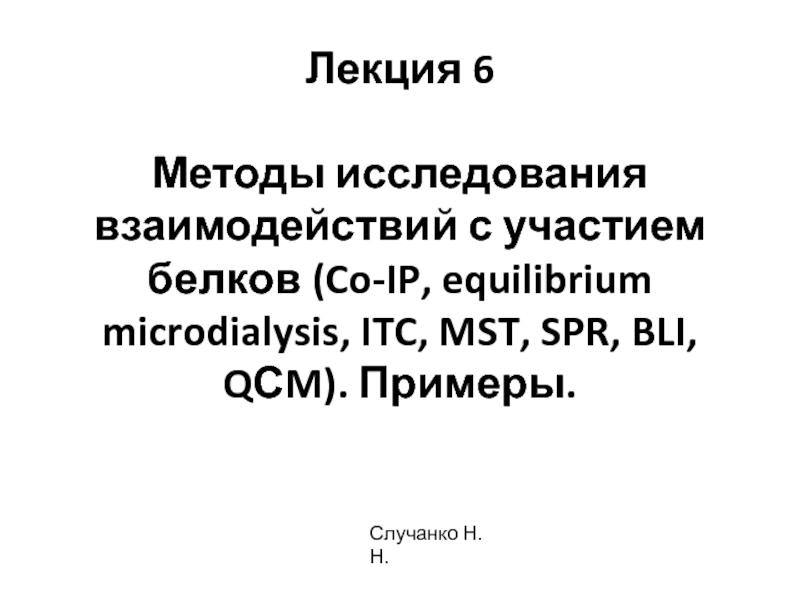
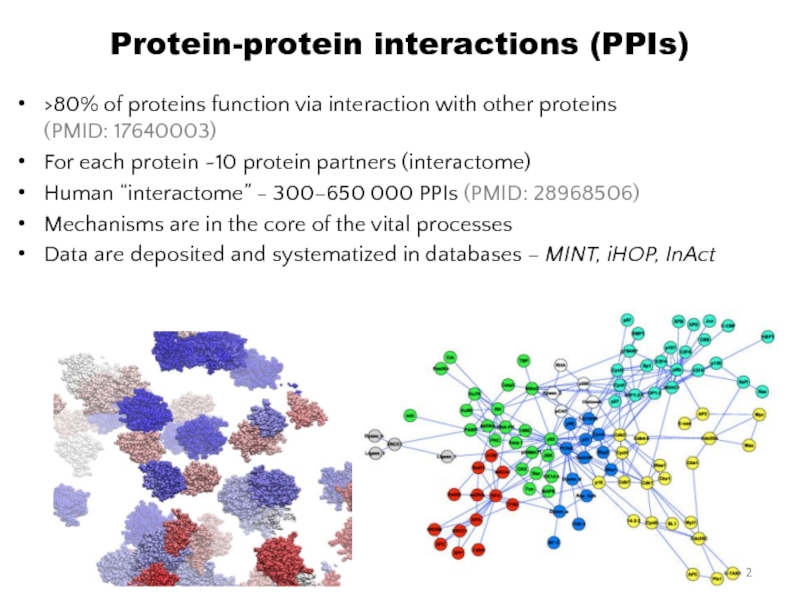
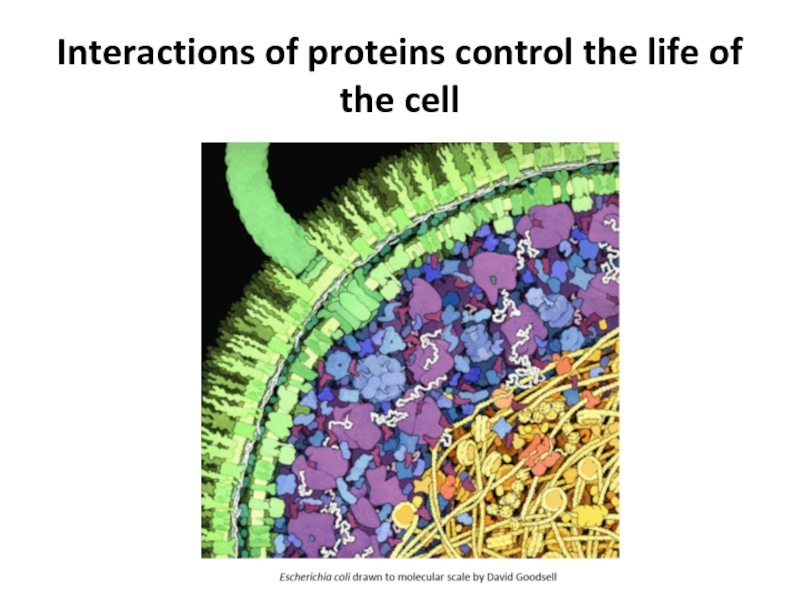
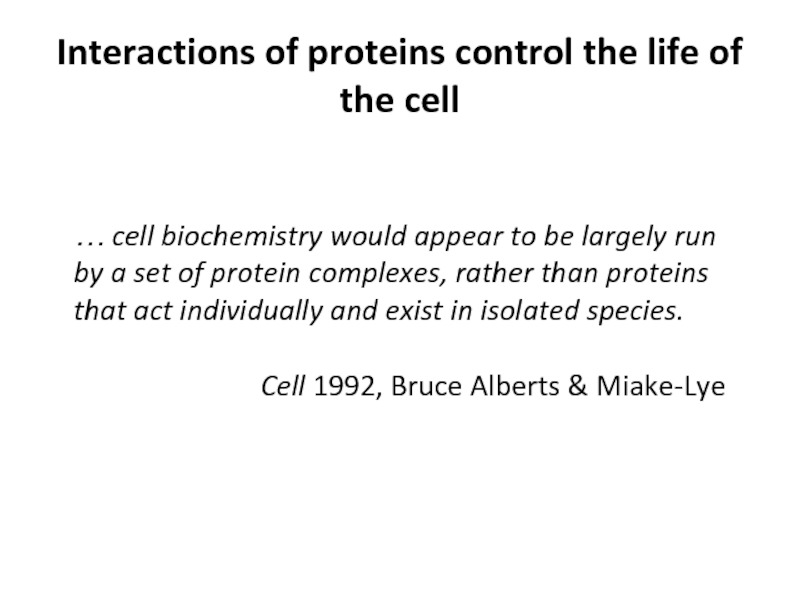
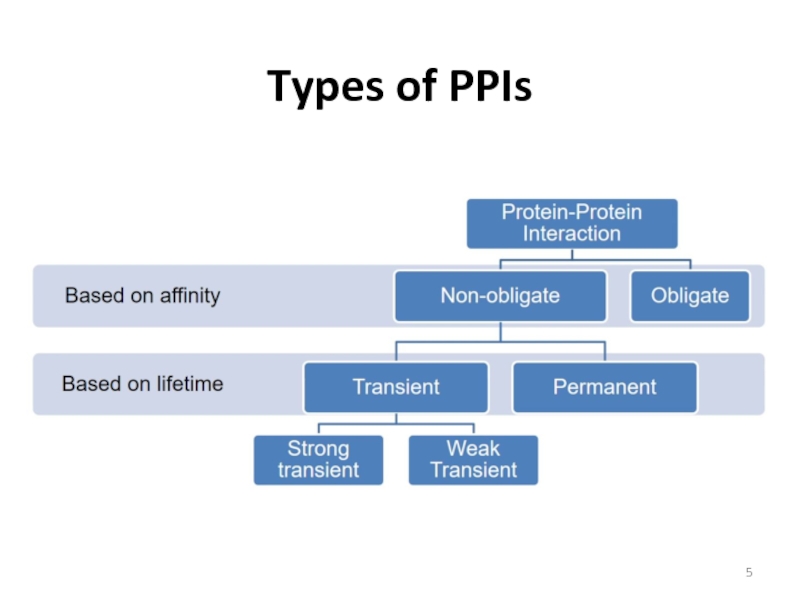

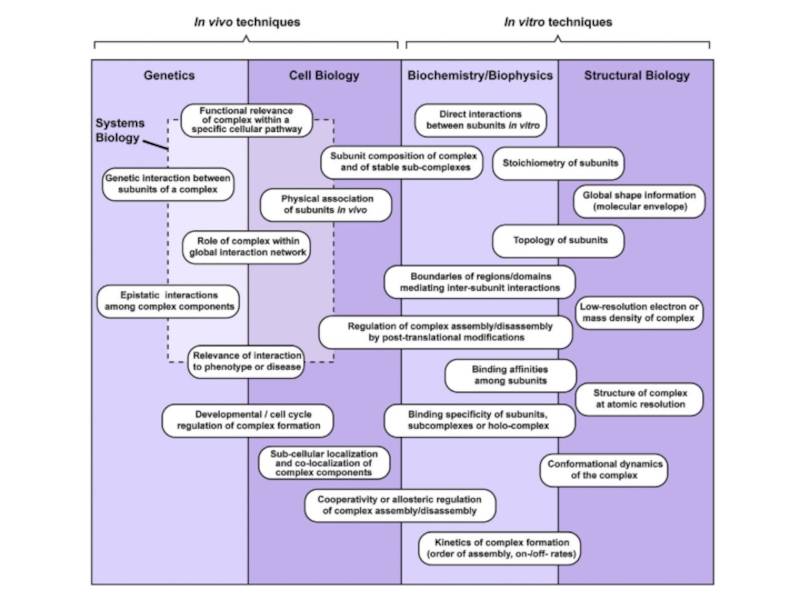
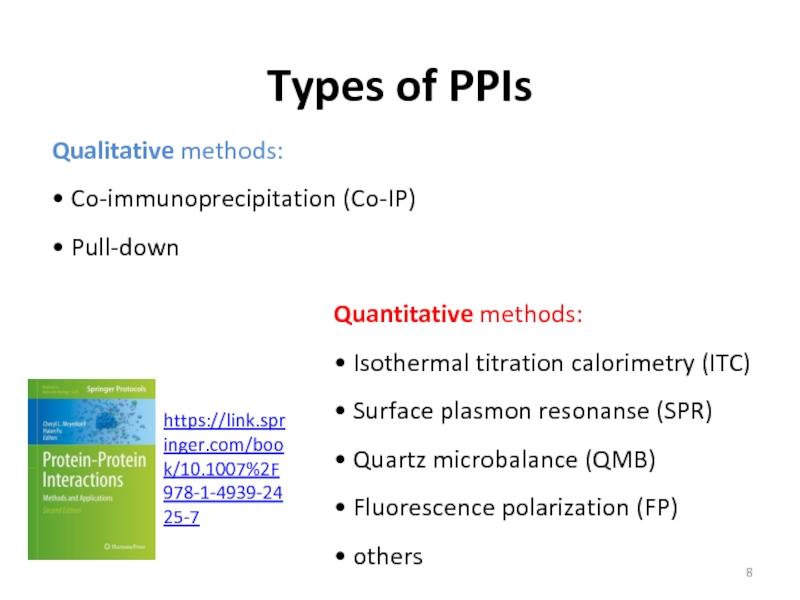
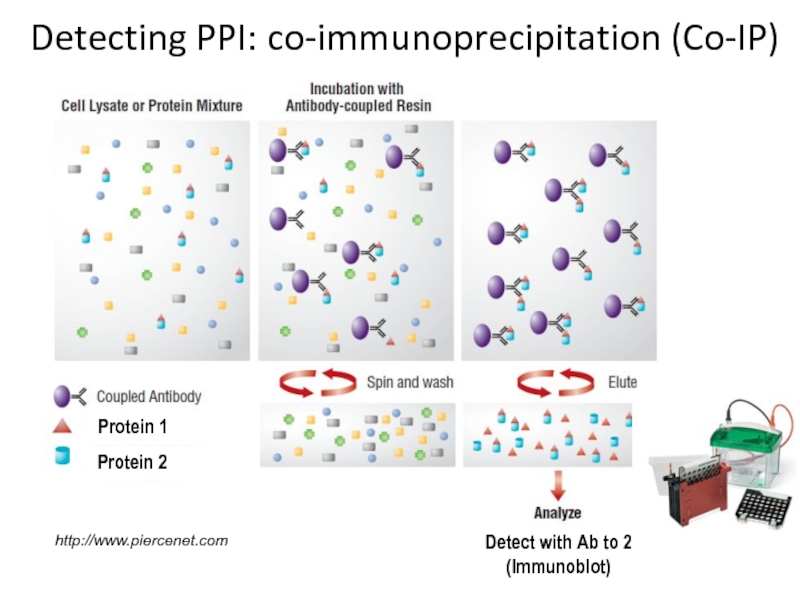
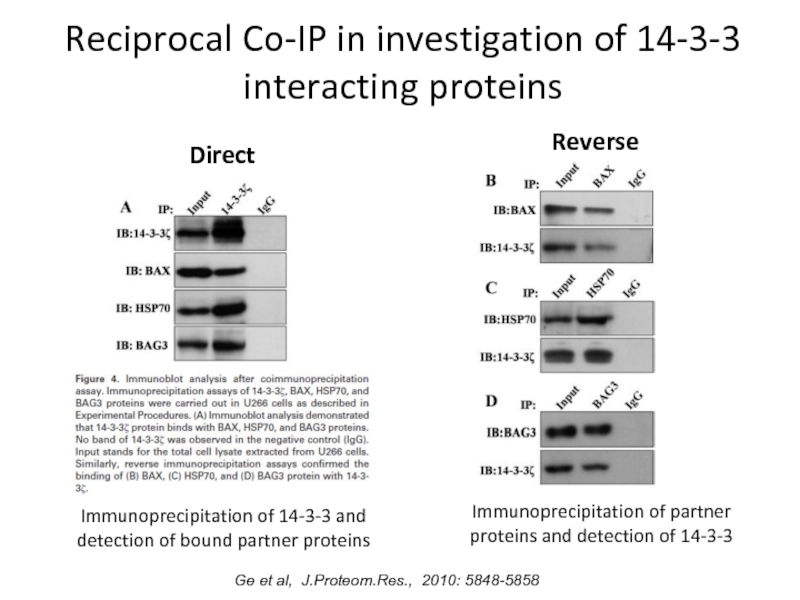
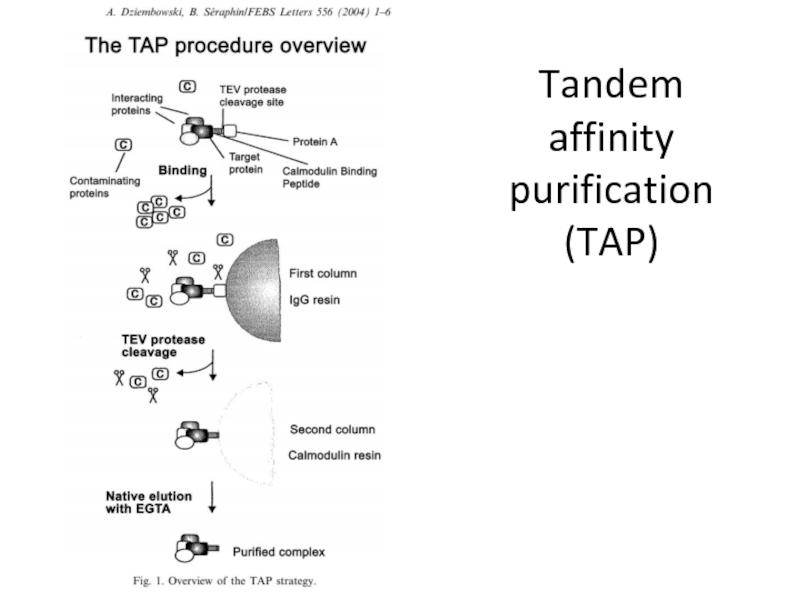
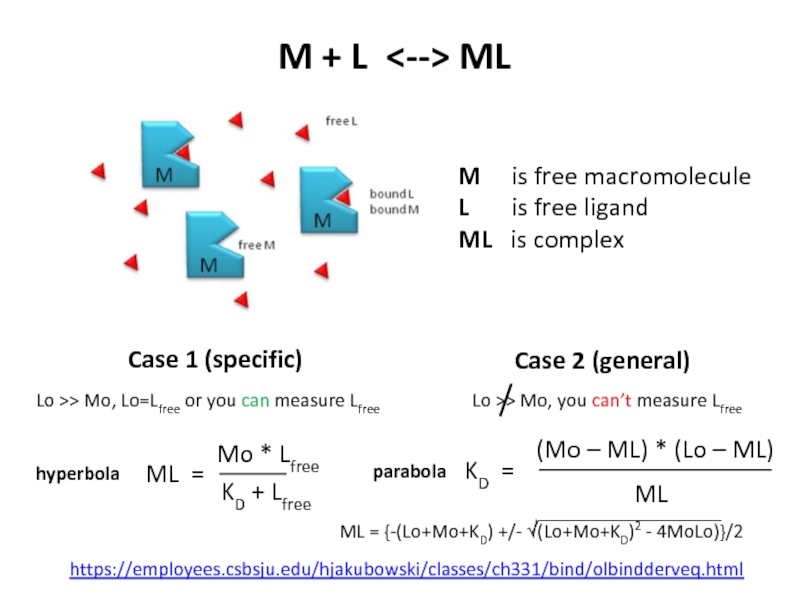
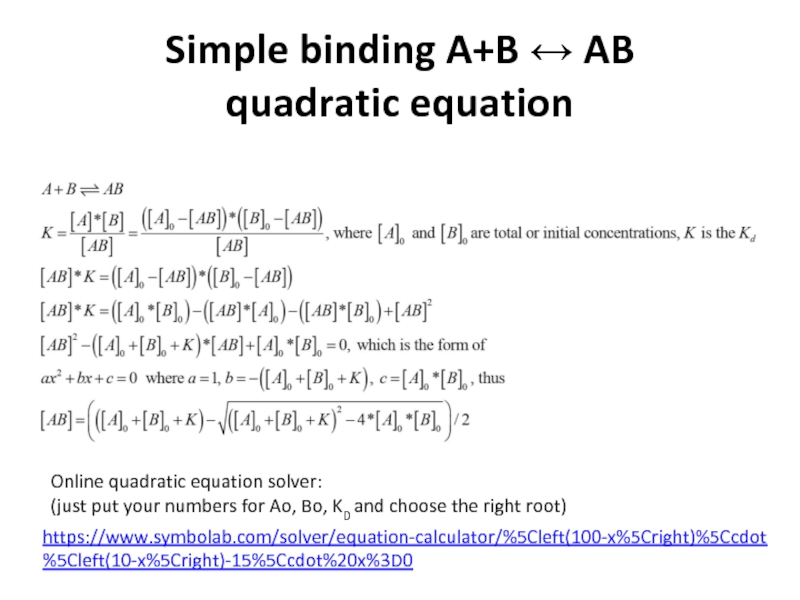
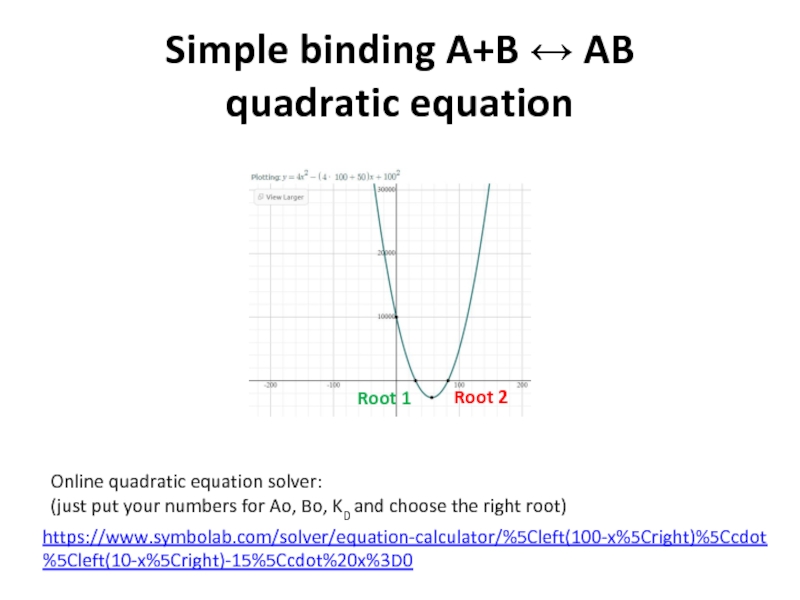
![Лекция 6 Методы исследования взаимодействий с участием белков (Co-IP, Dimerization processM + M M2 or DKd = [M][M]/[D] = [M]2/[D][Mo] Dimerization processM + M M2 or DKd = [M][M]/[D] = [M]2/[D][Mo] = [M] + 2[D] [M] = [Mo]](/img/thumbs/0de7929c70621cf922c7c5b54a84721f-800x.jpg)
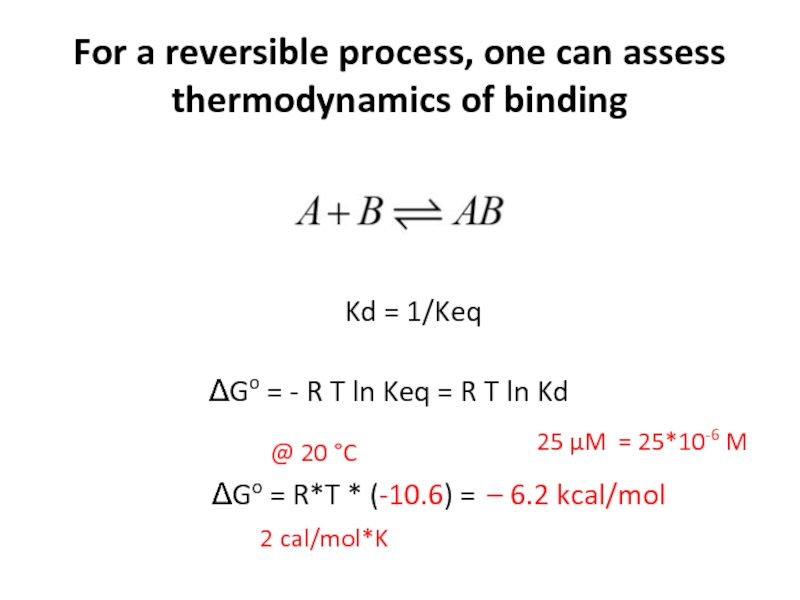
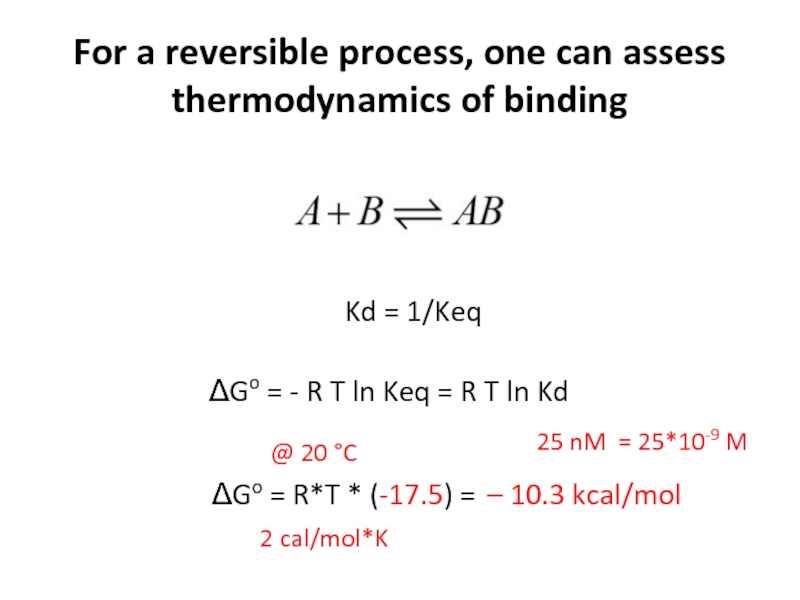

![Лекция 6 Методы исследования взаимодействий с участием белков (Co-IP, At equilibrium, both forward and reverse reaction rates are equalKd = At equilibrium, both forward and reverse reaction rates are equalKd = 1/KeqkonkoffVon = Voff kon [A] [B]](/img/thumbs/256682f422b68a2923787d59ed3da58f-800x.jpg)
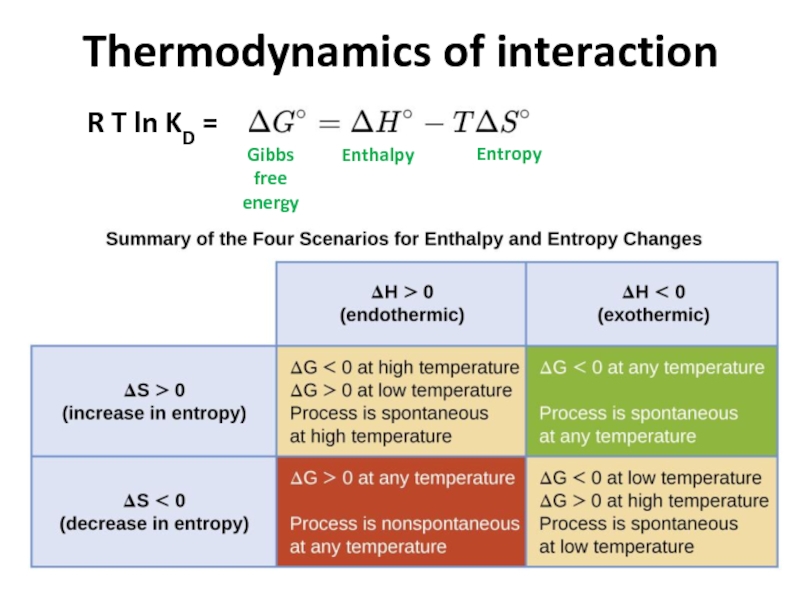
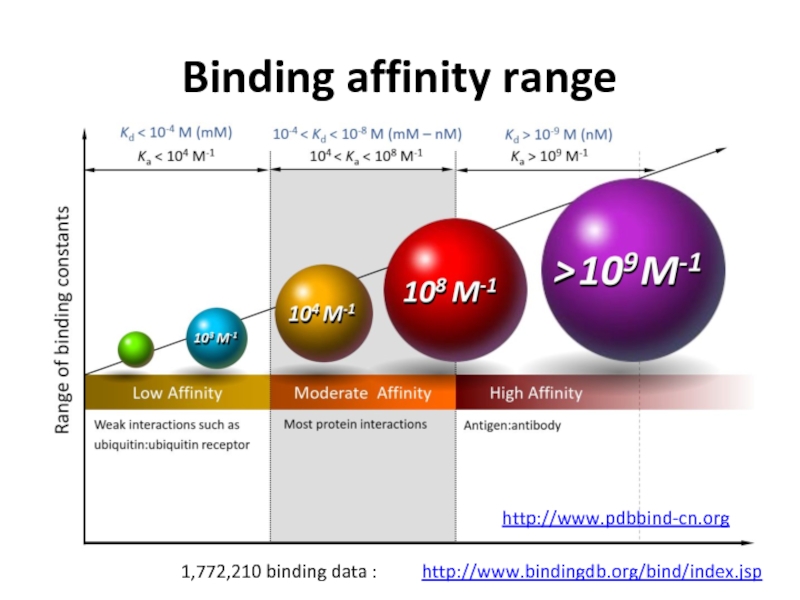
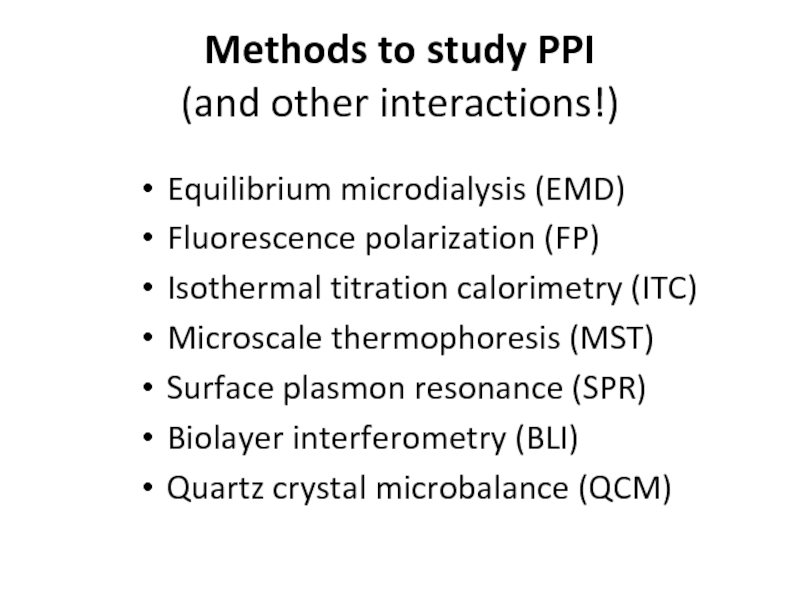


![Лекция 6 Методы исследования взаимодействий с участием белков (Co-IP, Equilibrium microdialysis (EMD)KD = [M] * [L][ML]M + L MLFastEasyInexpensiveAccurate determination Equilibrium microdialysis (EMD)KD = [M] * [L][ML]M + L MLFastEasyInexpensiveAccurate determination of affinity (KD) and stoichiometry](/img/thumbs/59cf6eabc44b68696b0096090e8a9517-800x.jpg)
